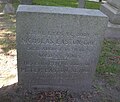
William Coddington was an early magistrate of the Massachusetts Bay Colony and later of the Colony of Rhode Island and Providence Plantations. He served as the judge of Portsmouth and Newport in that colony, governor of Portsmouth and Newport, deputy governor of the four-town colony, and then governor of the entire colony. Coddington was born and raised in Lincolnshire, England. He accompanied the Winthrop Fleet on its voyage to New England in 1630, becoming an early leader in Boston. There he built the first brick house and became heavily involved in the local government as an assistant magistrate, treasurer, and deputy.
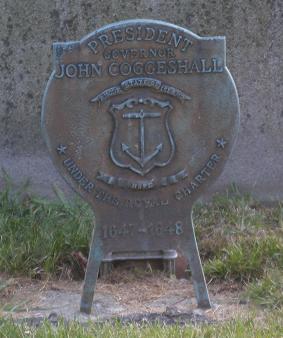
John Coggeshall Sr. was one of the founders of the Colony of Rhode Island and Providence Plantations and the first President of all four towns in the Colony. He was a successful silk merchant in Essex, England, but he emigrated to the Massachusetts Bay Colony in 1632 and quickly assumed a number of roles in the colonial government. In the mid-1630s, he became a supporter of dissident minister John Wheelwright and of Anne Hutchinson. Hutchinson was tried as a heretic in 1637, and Coggeshall was one of three deputies who voted for her acquittal. She was banished from the colony in 1638, and the three deputies who voted for her acquittal were also compelled to leave. Before leaving Boston, Coggeshall and many other Hutchinson supporters signed the Portsmouth Compact in March 1638 agreeing to form a government based on the individual consent of the inhabitants. They then established the settlement of Portsmouth on Aquidneck Island, one of the four towns comprising the Colony of Rhode Island and Providence Plantations.

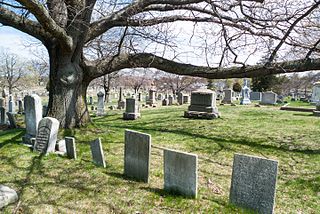
The North Burial Ground is a 110-acre (0.45 km2) cemetery in Providence, Rhode Island dating to 1700, the first public cemetery in Providence. It is located north of downtown Providence, bounded by North Main Street, Branch Avenue, the Moshassuck River, and Cemetery Street. Its main entrance is at the junction of Branch and North Main. The burial ground is one of the larger municipal cemeteries in Southern New England, and it accepts 220 to 225 burials per year.
Nicholas Easton (c.1593–1675) was an early colonial President and Governor of Rhode Island. Born in Hampshire, England, he lived in the towns of Lymington and Romsey before immigrating to New England with his two sons in 1634. Once in the New World, he lived in the Massachusetts Bay Colony towns of Ipswich, Newbury, and Hampton. Easton supported the dissident ministers John Wheelwright and Anne Hutchinson during the Antinomian Controversy, and was disarmed in 1637, and then banished from the Massachusetts colony the following year. Along with many other Hutchinson supporters, he settled in Portsmouth on Aquidneck Island, later a part of the Colony of Rhode Island and Providence Plantations. He was in Portsmouth for about a year when he and eight others signed an agreement to create a plantation elsewhere on the island, establishing the town of Newport.

Touro Synagogue Cemetery, dedicated in 1677, is located in the colonial historic district of Newport, Rhode Island, not far from the Touro Synagogue. Other Jewish graves are found nearby as part of the Common Burying Ground and Island Cemetery on Farewell Street.
John Easton (1624–1705) was a political leader in the Colony of Rhode Island and Providence Plantations, devoting decades to public service before eventually becoming governor of the colony. Born in Hampshire, England, he sailed to New England with his widowed father and older brother, settling in Ipswich and Newbury in the Massachusetts Bay Colony. As a supporter of the dissident ministers John Wheelwright and Anne Hutchinson during the Antinomian Controversy, his father was exiled, and settled in Portsmouth on Aquidneck Island with many other Hutchinson supporters. Here there was discord among the leaders of the settlement, and his father followed William Coddington to the south end of the island where they established the town of Newport. The younger Easton remained in Newport the remainder of his life, where he became involved in civil affairs before the age of 30.

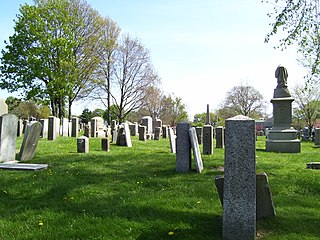
The Common Burying Ground and Island Cemetery are a pair of separate cemeteries on Farewell and Warner Street in Newport, Rhode Island. Together they contain over 5,000 graves, including a colonial-era slave cemetery and Jewish graves. The pair of cemeteries was added to the National Register of Historic Places as a single listing in 1974.

Jeremy Clarke (1605–1652) was an early colonial settler and President of the Colony of Rhode Island and Providence Plantations. Born into a prominent family in England, he was a merchant who came to New England with his wife, Frances Latham, and four stepchildren, settling first at Portsmouth in 1638, but the following year joining William Coddington and others in establishing the town of Newport. Here he held a variety of civic positions until 1648 when Coddington's election as President of the colony was disputed, and Clarke was chosen to serve in that office instead. He was the father of Walter Clarke, another colonial governor of Rhode Island, and also had family connections with several other future governors of the colony.
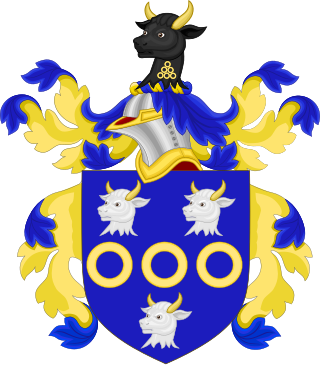
Henry Bull (1610–1694) was an early colonial Governor of Rhode Island, serving for two separate terms, one before and one after the tenure of Edmund Andros under the Dominion of New England. Sailing from England as a young man, Bull first settled in Roxbury in the Massachusetts Bay Colony, but soon became a follower of the dissident ministers John Wheelwright and Anne Hutchinson, and was excommunicated from the Roxbury church. With many other followers of Hutchinson, he signed the Portsmouth Compact, and settled on Aquidneck Island in the Narragansett Bay. Within a year of arriving there, he and others followed William Coddington to the south end of the island where they established the town of Newport.

Arnold Burying Ground is a historic cemetery on Pelham Street just east of Spring Street in Newport, Rhode Island. It is the burial place of Benedict Arnold, Rhode Island's first governor under the Royal Charter of 1663.
William Coddington Jr. was an early governor of the Colony of Rhode Island and Providence Plantations, serving two consecutive terms from 1683 to 1685.

The Clifton Burying Ground is an early colonial cemetery located in Newport, Rhode Island, United States. It is a Quaker cemetery, and has the graves of four Rhode Island colonial governors.

Washington Square is the geographical and historical heart of Newport Rhode Island. More trapezoid than square, it exists at the intersection of several major streets and what was the colonial long wharf, projecting into the harbor off Aquidneck Island and into Narragansett Bay. Although as a civic space it is colonial in origin, dating back to the first settlement of 1639, much of its present shape, form and name dates from the 19th century while a number of its most prominent buildings are of early 20th century design. Like many civic spaces, it developed over time rather than being imposed by design.

The Governor Greene Cemetery, frequently called the Governor Greene Lot, is designated as Rhode Island Historical Cemetery, Warwick, #40, and is a late colonial cemetery located in Warwick, Rhode Island near the East Greenwich town line. It is a family cemetery with the graves of two Rhode Island governors, and other prominent politicians who are related to them.

Wilberforce Cemetery is a heritage-listed cemetery at Clergy Road, Wilberforce, City of Hawkesbury, New South Wales, Australia. It was laid out by surveyor James Meehan and established in 1811. It is also known as St John's Church of England Cemetery. It is owned by Hawkesbury City Council. It was added to the New South Wales State Heritage Register on 20 August 2010.





